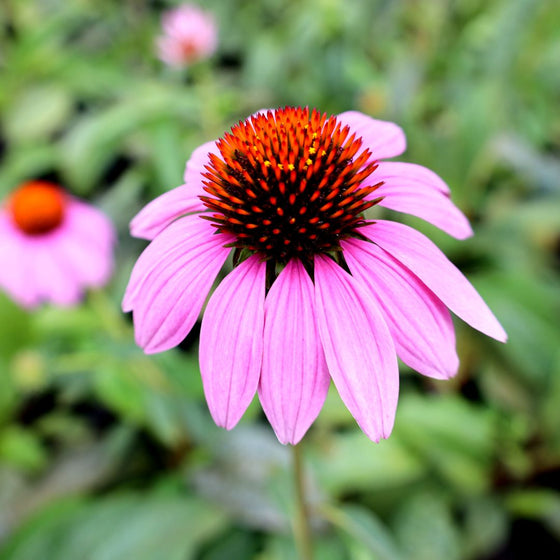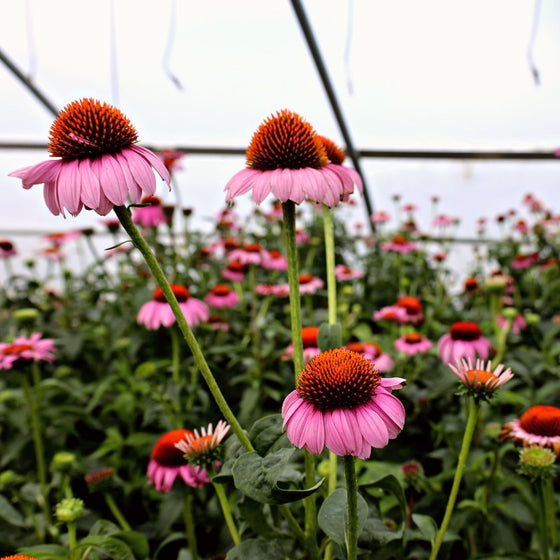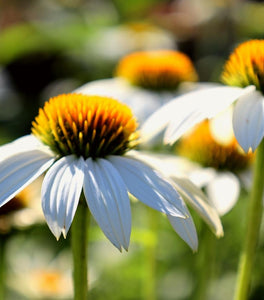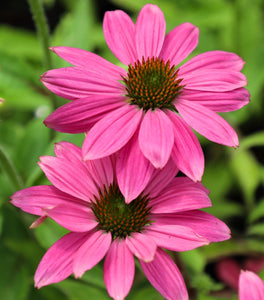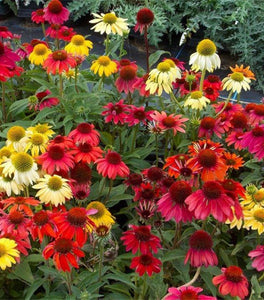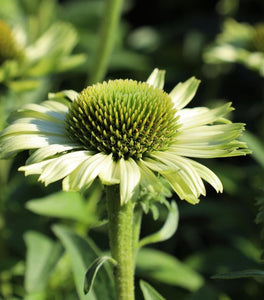
Images Depict Mature Plants
Purple Coneflower for Sale Online
Echinacea Magnus, also known as Magnus Purple Coneflower, is a striking, easy-care perennial celebrated for its large, vibrant rose-pink petals and bold orange-brown central cones. Blooming from early summer to fall, this award-winning variety of purple coneflower adds long-lasting color, texture, and pollinator appeal to borders, meadows, and mixed perennial gardens. Standing 3 to 4 feet tall with strong, upright stems, Echinacea Magnus makes an excellent cut flower and attracts butterflies, bees, and other beneficial insects throughout the growing season.
Tough and drought-tolerant once established, Magnus Coneflower thrives in full sun and well-drained soil, making it a great choice for xeriscaping, native plantings, and low-maintenance landscapes. Its deep taproot allows it to withstand heat and dry spells, while its resistance to deer and rabbits adds to its appeal in areas prone to wildlife browsing. This cultivar is also known for its uniform growth and extended bloom period, providing continuous interest even into late summer when many other perennials begin to fade.
Perfect for mass plantings or as a vibrant accent in pollinator-friendly gardens, Echinacea Magnus delivers bold color and garden performance year after year. Whether used in cottage gardens, prairie-style plantings, or container displays, this dependable coneflower brings lasting beauty with minimal care. Its robust nature and vivid blooms also make it a favorite for attracting wildlife and adding four-season interest through seed heads that persist into winter.
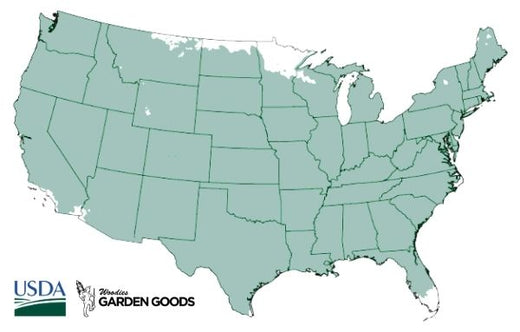
| Hardiness Zone: | 4-9 |
|---|---|
| Mature Height: | 36 Inches |
| Mature Width: | 18 to 24 Inches |
| Sunlight: | Full sun |
| Water Requirements: | Average |
| Selling Points: | Native, long blooming, butterflies and pollinators, songbirds |
How to Care for Echinacea Magnus
Be sure to read our planting instructions to ensure a healthy and happy Echinacea MagnusPlant for years to come!
How do I plant Echinacea Magnus Plants?
Never plant Echinacea Magnus deeper than originally planted in the pot. Doing so can cause rotting of the stem and death to the plant. Most plants are very drought tolerant; however they grow very slow without adequate water. The one question that comes up often, "when is the best time to plant? For the most part, Echinacea 'Magnus' can be planted year around, provided the ground isn't frozen. Below Virginia many nurseries and landscapers plant year around, weather permitting. When planting Purple Coneflower, remember the only water source the plant has, is its small root ball, and all the water the plant uses must come from there until new roots can grow into the surrounding soil. Newly planted perennials should be watered twice weekly (Minimum), and under hot conditions possibly more.
How do I water Echinacea Magnus Plants?
Watering Echinacea Magnus properly is essential during its establishment period, but once mature, this coneflower becomes remarkably drought tolerant. In the first growing season, water deeply once or twice per week to encourage deep root growth, especially during dry spells. Ensure the soil is moist but never soggy—overwatering can lead to root rot, especially in poorly draining soil. Always water at the base of the plant to keep the foliage dry and reduce the risk of disease. Once established, Echinacea Magnus requires minimal watering and thrives in dry, sunny locations, making it ideal for low-maintenance and drought-tolerant landscapes. During extended heat waves or drought, a deep watering every two to three weeks may be necessary to keep blooms vibrant and foliage healthy. Mulching around the base can help conserve soil moisture and reduce watering frequency. With the right watering habits, Magnus Coneflowers will flourish in borders, pollinator gardens, and wildflower meadows with long-lasting summer color and minimal upkeep.
How do I fertilize Echinacea Magnus Plants?
Fertilizing Echinacea Magnus is a simple way to promote healthy growth and abundant blooms, though this tough perennial doesn’t require heavy feeding. In early spring, apply a balanced, slow-release fertilizer such as 10-10-10 around the base of the plant, being careful not to let it touch the crown. Lightly work the fertilizer into the top few inches of soil and water thoroughly to help the nutrients reach the roots. This single application is usually sufficient to support vibrant blooms and strong stems throughout the growing season. For gardeners preferring organic options, compost or well-aged manure applied in spring can enrich the soil naturally and improve moisture retention. Avoid over-fertilizing, as excessive nutrients—especially nitrogen—can lead to leggy growth and fewer flowers. Echinacea Magnus thrives in lean soils and often performs better with minimal fertilization, making it a perfect choice for low-maintenance gardens, native plantings, and pollinator-friendly landscapes. With just a light seasonal feeding, these coneflowers will reward you with bold, long-lasting color from summer through fall.

How and When Should I Prune My Echinacea Magnus Plants?
Pruning Echinacea Magnus is important for maintaining plant health, encouraging new blooms, and extending the flowering season. The best time to begin pruning is in mid to late summer—after the first flush of blooms has faded—by deadheading spent flowers down to a leaf node to promote continued blooming. This not only keeps your garden tidy but also encourages the plant to produce additional flower stems, extending its vibrant display into early fall. Use clean, sharp pruners and be careful not to remove new buds forming along the stems. In late fall or early spring, once the growing season has ended, you can cut back Echinacea Magnus to just a few inches above the soil to remove old stems and prepare the plant for fresh spring growth. However, many gardeners choose to leave the seed heads standing through winter, as they add architectural interest and provide food for birds like finches. Pruning in early spring allows you to preserve this winter wildlife value while ensuring your coneflowers return strong and healthy. With proper pruning, Magnus Coneflowers will thrive in borders, native gardens, and pollinator-friendly plantings, delivering bold color and reliable performance year after year.

